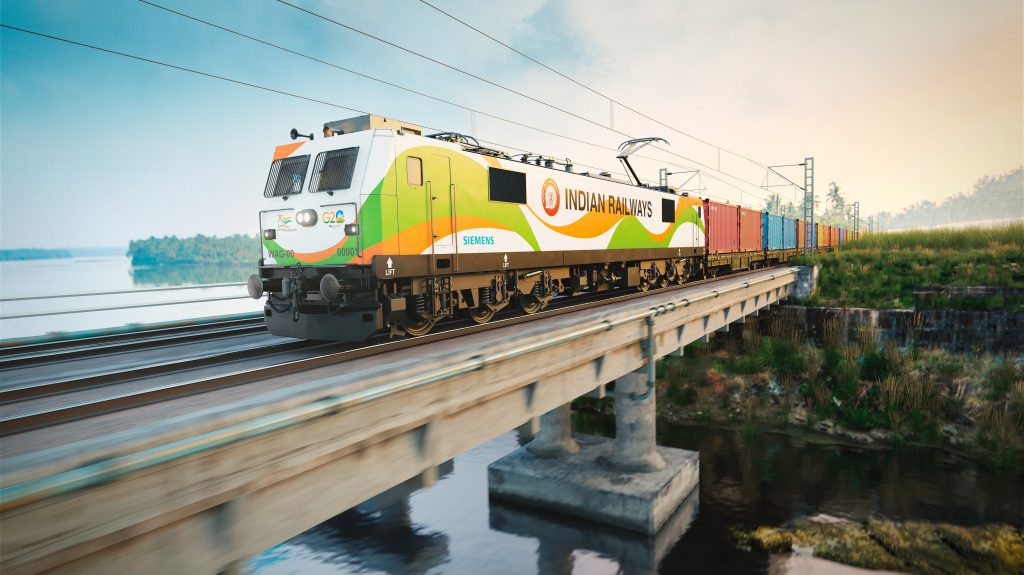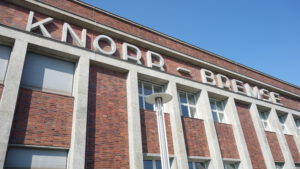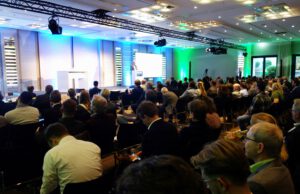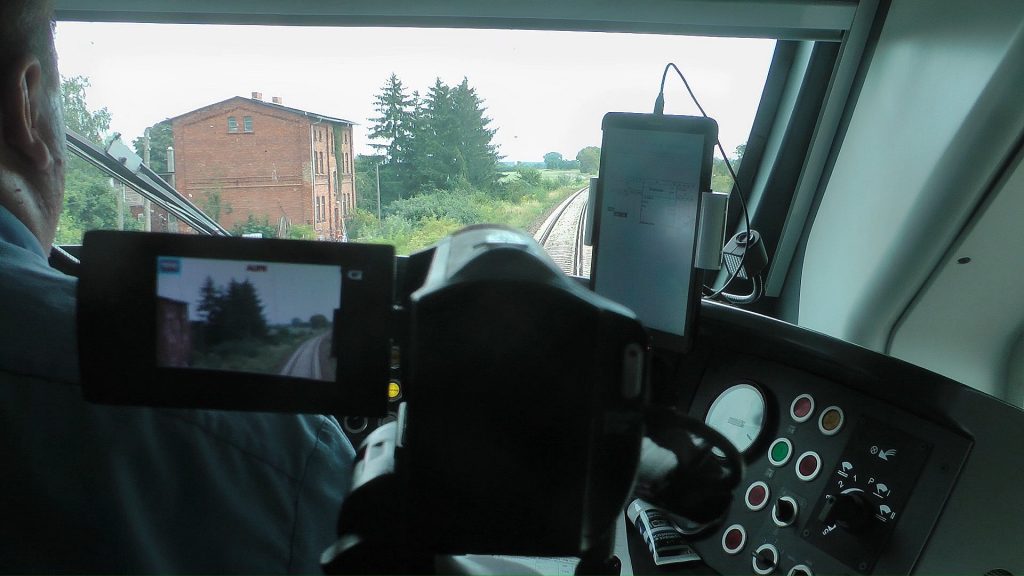The customer is the state-owned Indian railway company Indian Railways. Siemens Mobility will build, commission and test the locomotives. The contract includes the delivery of the locomotives over a period of eleven years. Particularly gratifying for the manufacturer: He can also take over the maintenance and repair over a period of 35 years.
Assembly will take place at the Indian Railways plant in Dahod in the Indian state of Gujarat. Maintenance is carried out at Indian Railways’ four depots at Vishakhapatnam, Raipur, Kharagpur and Pune. The customer is also involved in terms of personnel: the assembly and maintenance of the locomotives are carried out together with employees from Indian Railways. The contract has a total value of around EUR 3 billion, excluding taxes and price changes.
| Siemens CEO Roland Busch is understandably enthusiastic. “I am very pleased about this major order, which will help to achieve the country’s ambitious goals of building the largest electrified rail network in the world,” explains Busch. “Our locomotives will save around 800 million tons of CO2 emissions over their life cycle. Siemens is thus supporting the sustainable transformation of the transport sector in India. Because the country wants to almost double rail freight capacities.” |
The new locomotives will be built for the Indian traction power system 25,000 V 50 Hz. They are to have an output of 9,000 hp and be used in freight transport by Indian Railways. They are designed to transport loads of up to 4,500 tons at a maximum speed of 120 kilometers per hour. According to Siemens, this will make them one of the most powerful freight locomotives in the world. The modern drive systems for the locomotives are manufactured locally at the Siemens Mobility plant in India. Siemens Mobility will use its Railigent platform to ensure maximum availability and performance of the locomotives in use.
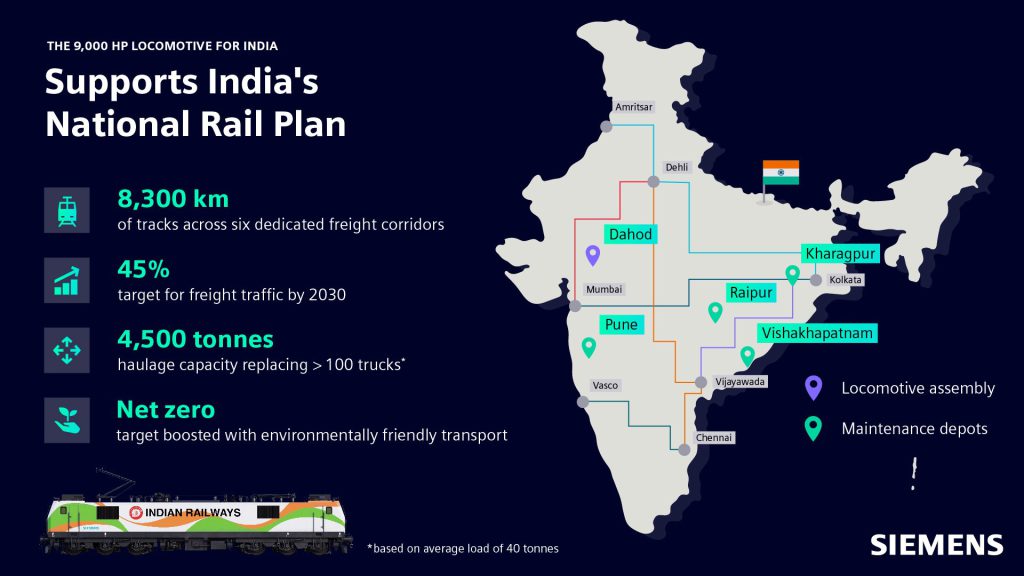 India has one of the largest rail transport and logistics networks in the world, emphasizes Siemens. The rail network is used by up to 24 million passengers and over 22,000 trains every day. The Indian government is also planning to increase rail’s share of freight transport from the current 27 percent to 40-45 percent. India is one of the few countries in the world whose rail network is almost completely electrified. As one of the fastest growing rail markets in the world, India has clear sustainability and technology goals. Indian Railways and the Indian Government have made a clear commitment to invest in state-of-the-art products to achieve net-zero carbon emissions by 2030. Over the course of their life cycle, the locomotives are intended to replace the transport services of 500,000 to 800,000 trucks.
India has one of the largest rail transport and logistics networks in the world, emphasizes Siemens. The rail network is used by up to 24 million passengers and over 22,000 trains every day. The Indian government is also planning to increase rail’s share of freight transport from the current 27 percent to 40-45 percent. India is one of the few countries in the world whose rail network is almost completely electrified. As one of the fastest growing rail markets in the world, India has clear sustainability and technology goals. Indian Railways and the Indian Government have made a clear commitment to invest in state-of-the-art products to achieve net-zero carbon emissions by 2030. Over the course of their life cycle, the locomotives are intended to replace the transport services of 500,000 to 800,000 trucks.
The close business relationship between Siemens and India dates back to the construction of the Indo-European telegraph line from London to Calcutta by Werner von Siemens and his brothers in 1867. Siemens has been successfully supporting Indian Railways for many decades with the latest technologies and its comprehensive portfolio of intelligent and efficient solutions for passenger and freight transport, including rail infrastructure and rolling stock. So Siemens can rightly say: We’ve always been there!
Hermann Schmidtendorf, Editor-in-Chief


